How to Open a Rice Ball and Rolled Sushi
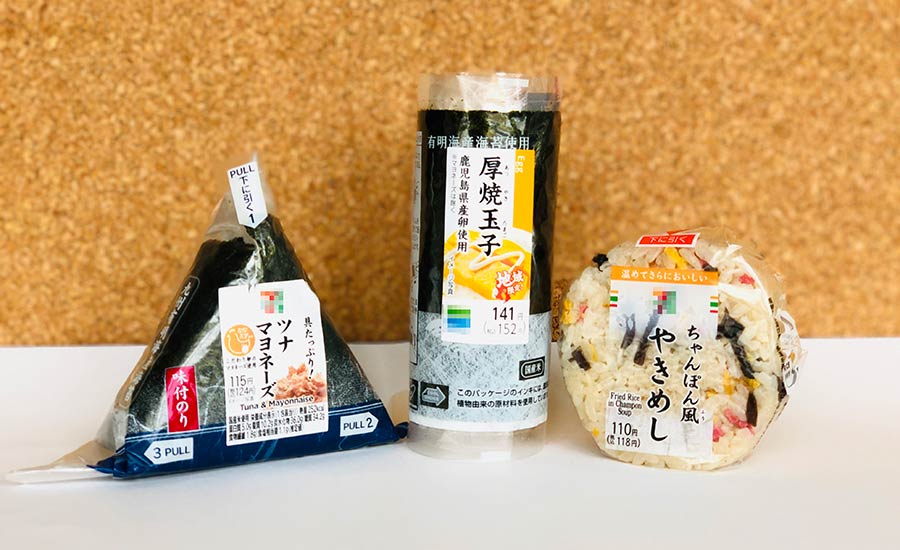
Witten by D. Carnegie Translated by A. Carnegie
1.6.2020 (Re:2.3.2022)
“ONIGIRI” rice balls are one of the most consumed foods by the Japanese, they are very affordable and can be bought at any convenience store or supermarket.Here we share the ways to open their special wrappers that keep them fresh, delicious and healthy.
2. How to open a triangle “Onigiri”
3. How to open a circle “Onigiri”
1. Japan’s Soul Food “Rice Ball” (Onigiri)
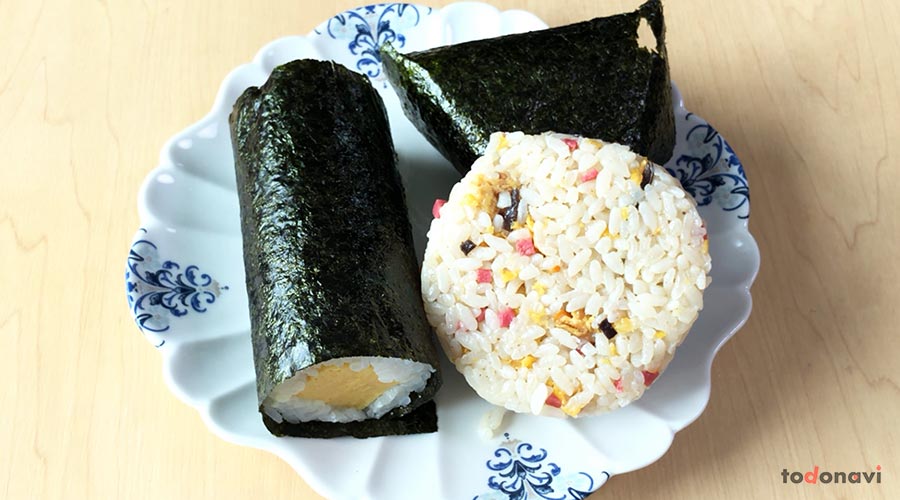
Rice ball is a Japanese fast food consisting of rice, a filling, and seaweed.There are several types of ingredients used as fillers, the most used are; salmon (sake), mustard greens (takana), Japanese plum pickle (umeboshi), seaweed (kombu), tuna with mayonnaise (tsunamayo).
Rice balls or “onigiri” are usually prepared at home to take with you on a picnic, as food for work, or as a snack. However, there is no doubt that at some point they will have the opportunity to buy one of these in a convenience store, and they will wonder how do I open this? Here we present it to you!
2. 1. Take the tip marked “1” and pull it down
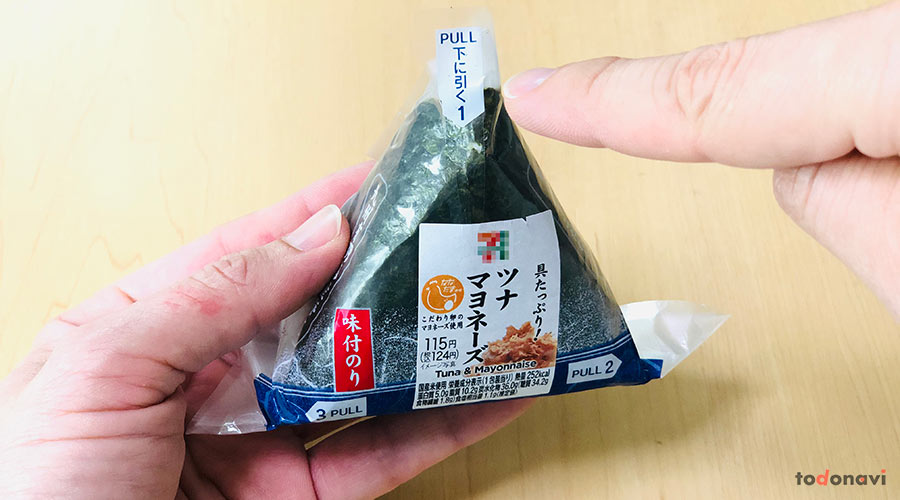
First, take the rice ball so that it is in front of you. At its top point, you will notice a tip that is marked “1”.
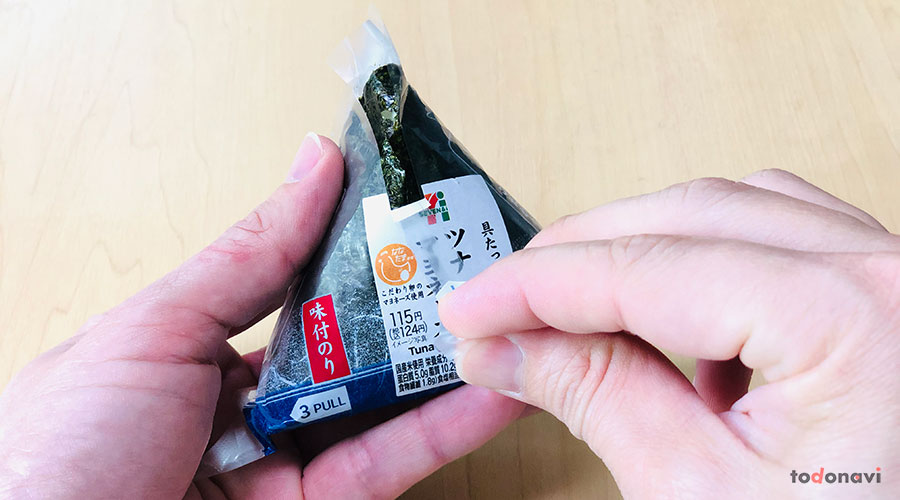
Hold the rice ball tightly and pull down the tear tape.

Pull the tear tape to the bottom.
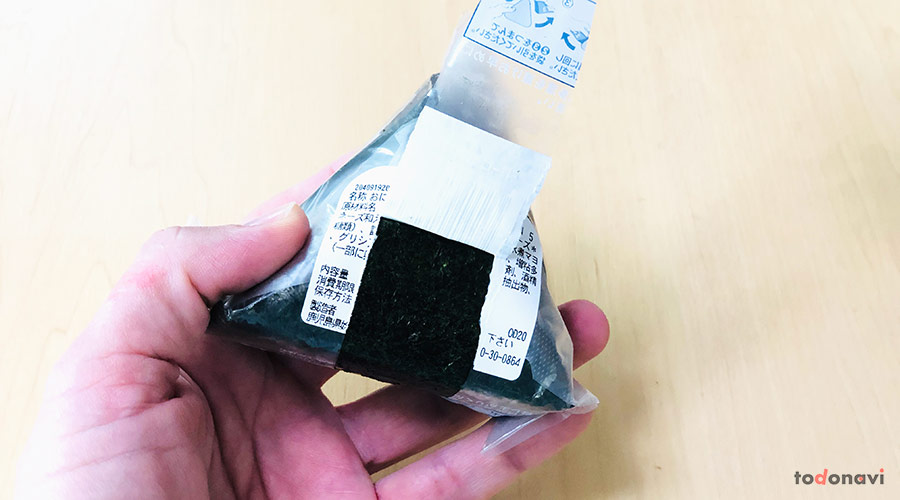
Continue pulling the tear tape on the reverse side until it is completely separated from the rice ball.
| 2. Pull the right corner marked “2”
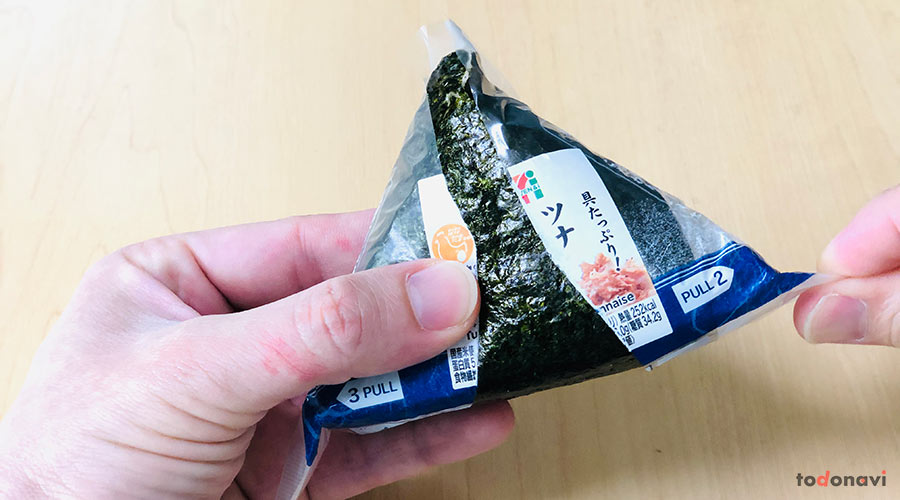
Then pull the right corner “2”. Pull it straight, gently and without twisting.
| 3. Pull the left corner marked “3”
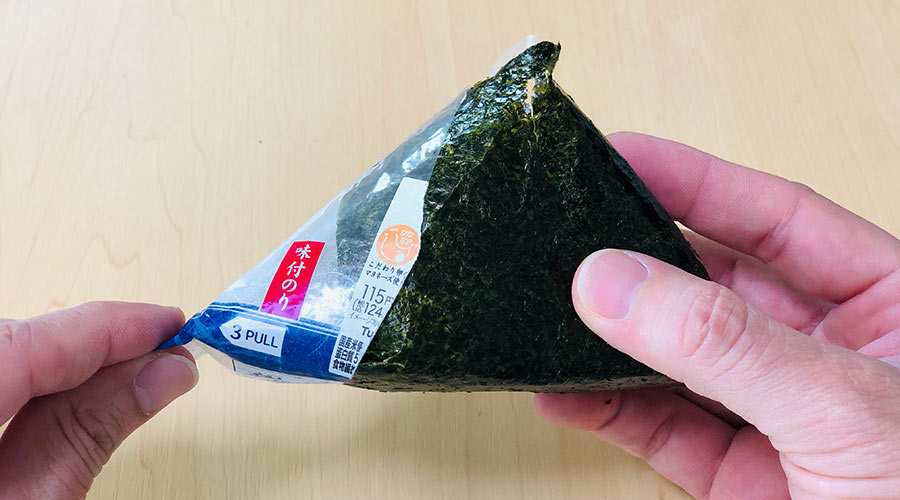
Finally, pull the left corner “3”.
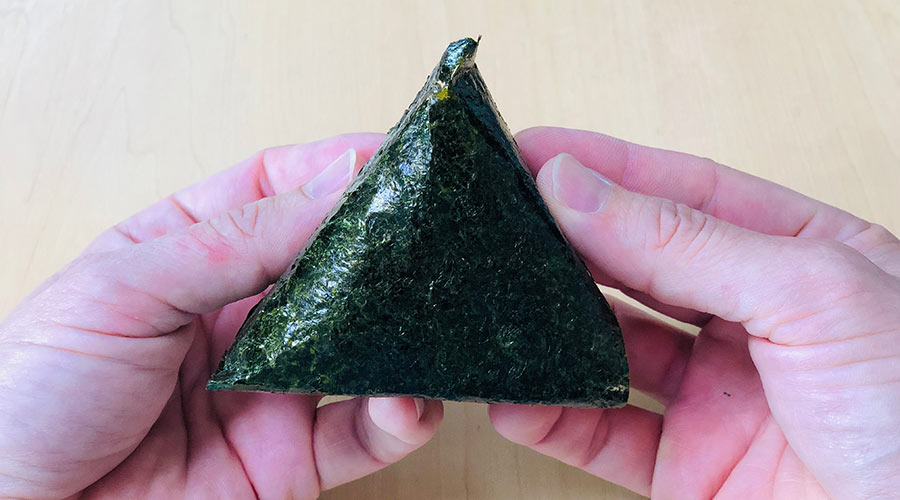
Done !, now you can enjoy it.
The rice balls, with this type of wrapping, very well separates the rice from the seaweed, so that the seaweed does not get wet and lose its crisp flavor.
3. Circular rice balls

Rice balls come in many varieties, such as those made with steamed rice with seaweed and shiso, “azuki” red beans (sekihan), fried rice seasoned with soy sauce boiled with vegetables, meat or seafood, and many other types.
The way to open this type of rice balls is similar to the previous ones.
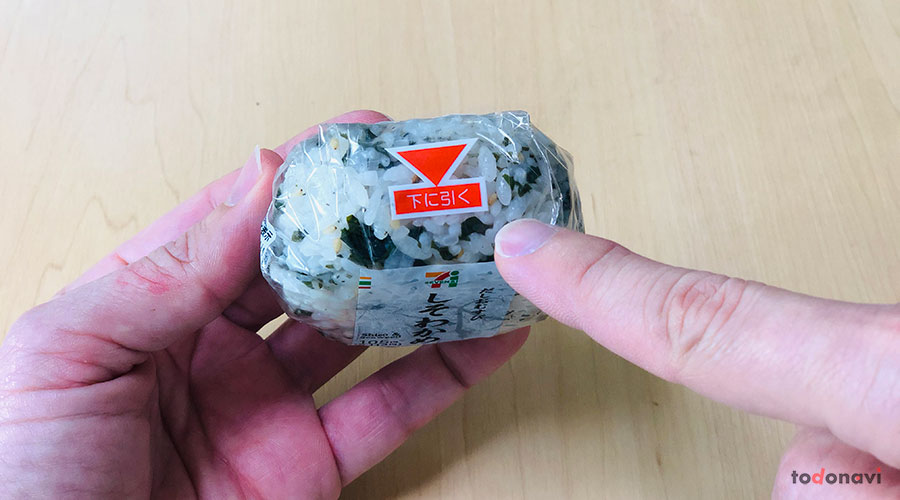
Take the place marked with a red triangle and pull it down.
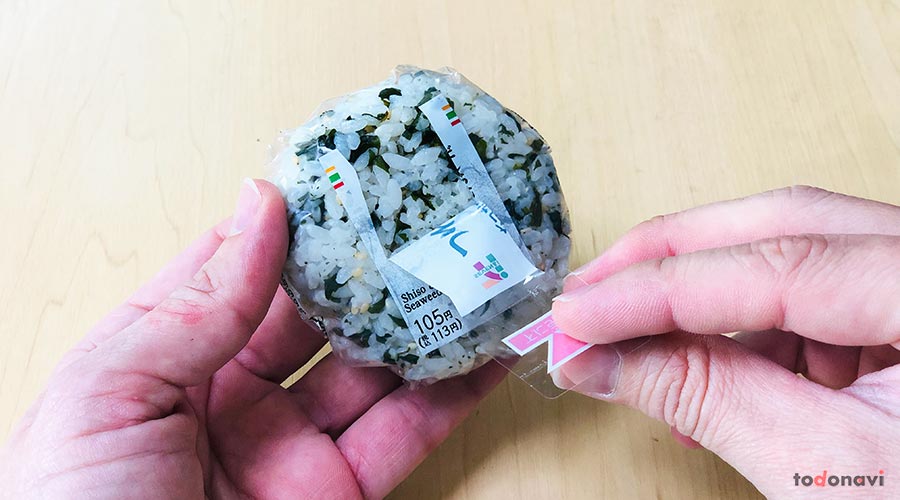
Take the place marked with a red triangle and pull the tear tape down.
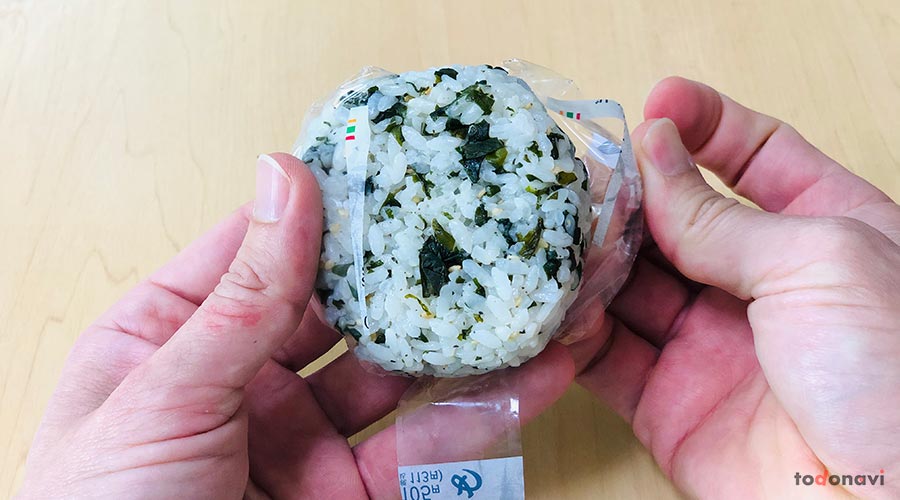
Pull the right half of the wrapper.
Watch out here!
If you completely remove the wrapper, the rice will stick to your hands. Leave the left half of the wrapper on so you can hold and eat it without getting your hands dirty.
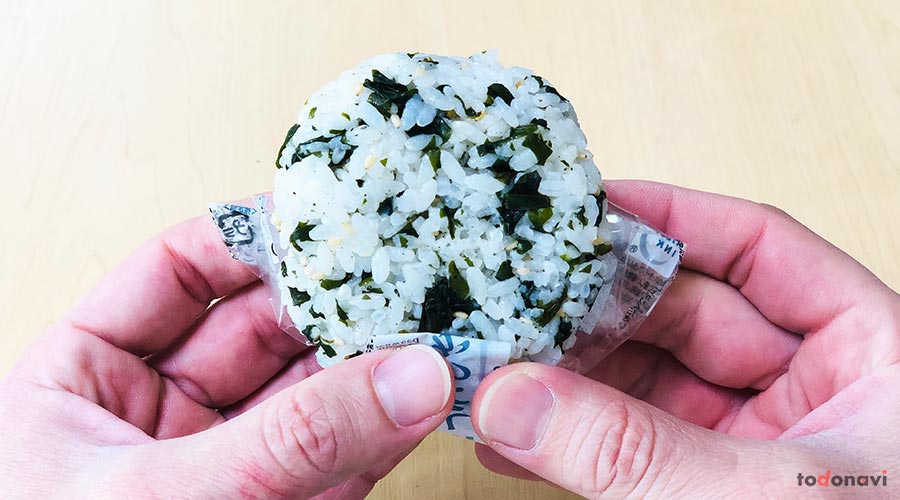
This way you are ready to savor it.
4. Hand-rolled sushi “Temakizushi”
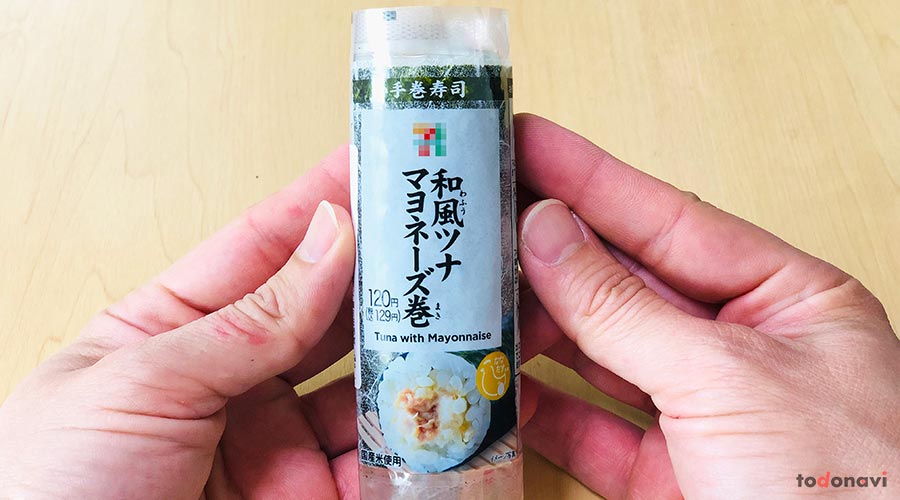 Hand-rolled sushi “temakizushi” is a type of sushi whose content is the same as a normal rice ball, with the big difference that hand-rolled sushi uses rice with vinegar “sumeshi”, the type used for all types sushi.One of the common contents of the “temakizushi” is the one that uses fermented soybeans (natto) as an ingredient.
Hand-rolled sushi “temakizushi” is a type of sushi whose content is the same as a normal rice ball, with the big difference that hand-rolled sushi uses rice with vinegar “sumeshi”, the type used for all types sushi.One of the common contents of the “temakizushi” is the one that uses fermented soybeans (natto) as an ingredient.
Let’s see the steps to open this.
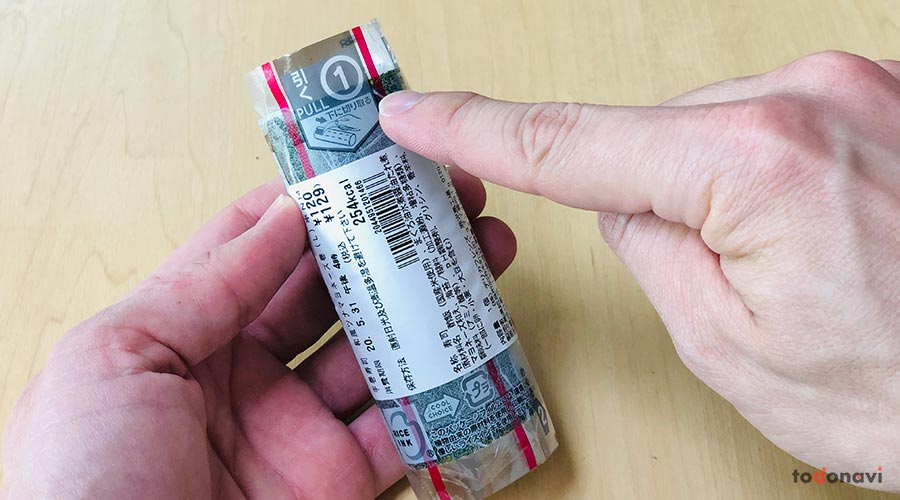
First, look for the sign marked “1”.
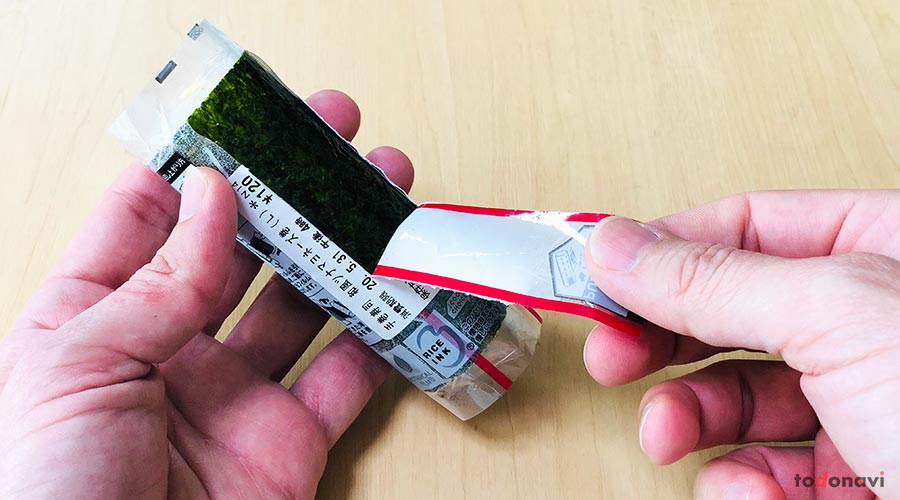
Then pull down, removing it completely.
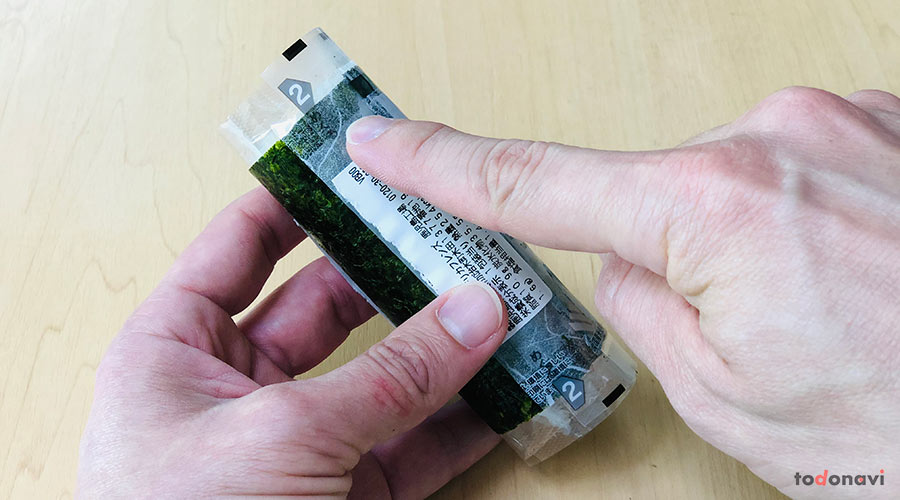
Second step, open the wrapper marked “2”.
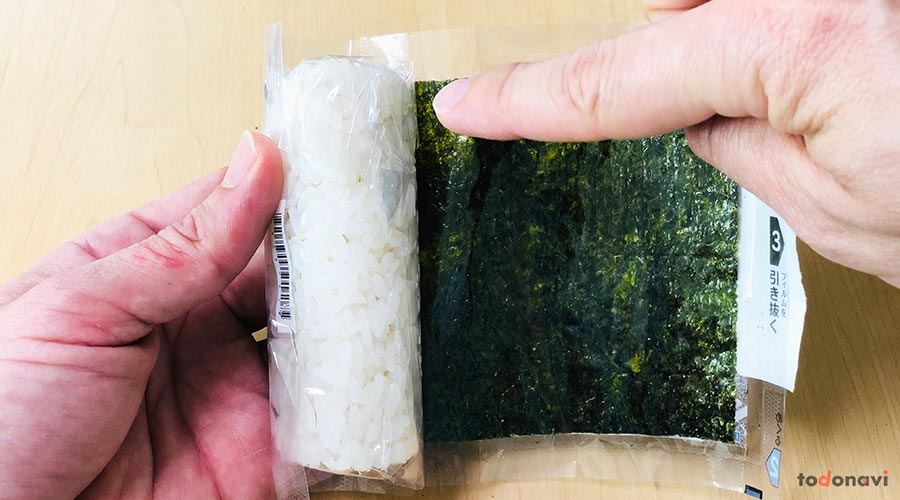
Unwrap the part that covers the rice.
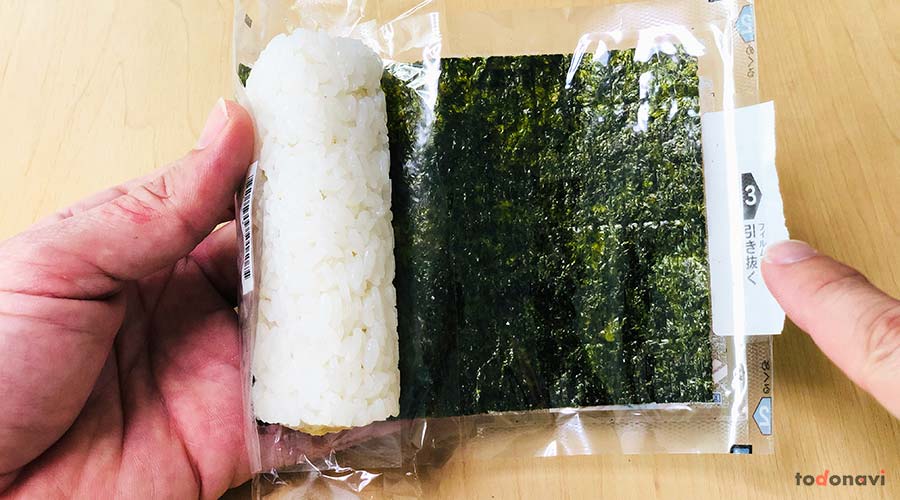
Then remove the plastic wrap covering the seaweed on the right side “3” as shown above.
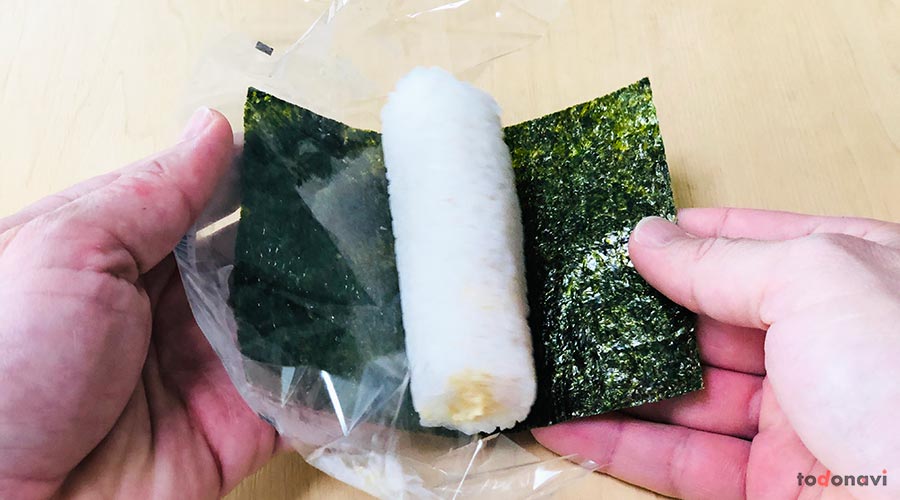
Roll the cylinder-shaped rice clockwise over the seaweed.
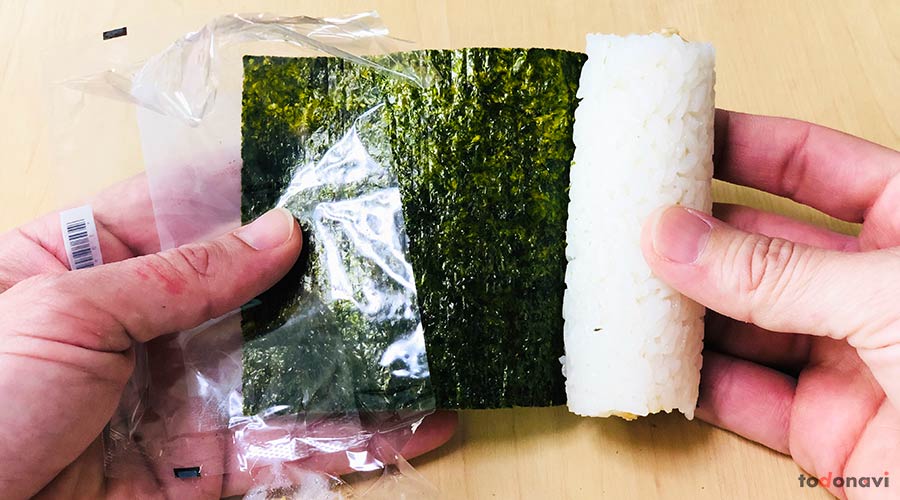
Next, remove the wrapper that covers the seaweed on the left side.
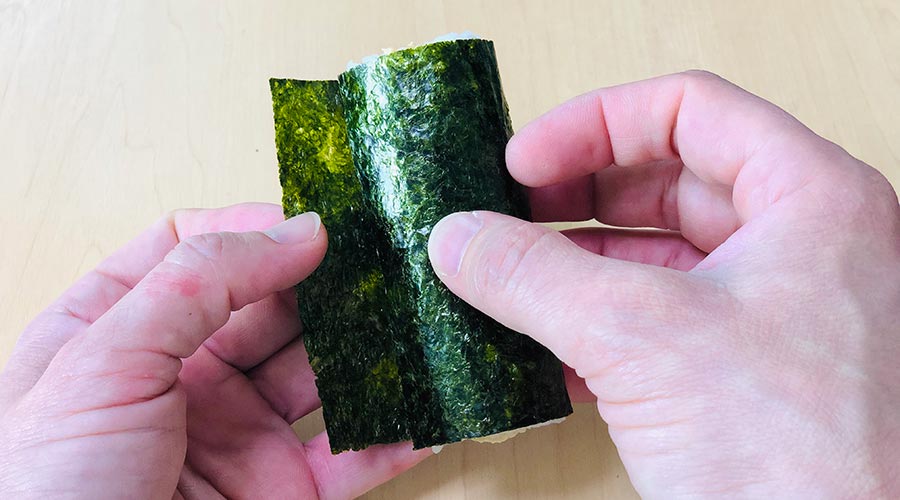
Finally wrap the rice with the seaweed as in the image.

Here it is, a delicious temakizushi ready for you.
Convenience store rice balls are great for when you’re in a hurry or want to eat something light and cheap.Be sure to try the various flavors of these delicacies when you are in Japan.
| Recommended Products
| Recommended Articles
Games for home that children and adults can enjoy!
Written by D. Carnegie
Translated by A. Carnegie
The information contained in this article is based on the time of coverage and writing.
・・・ todonavi ・・・



